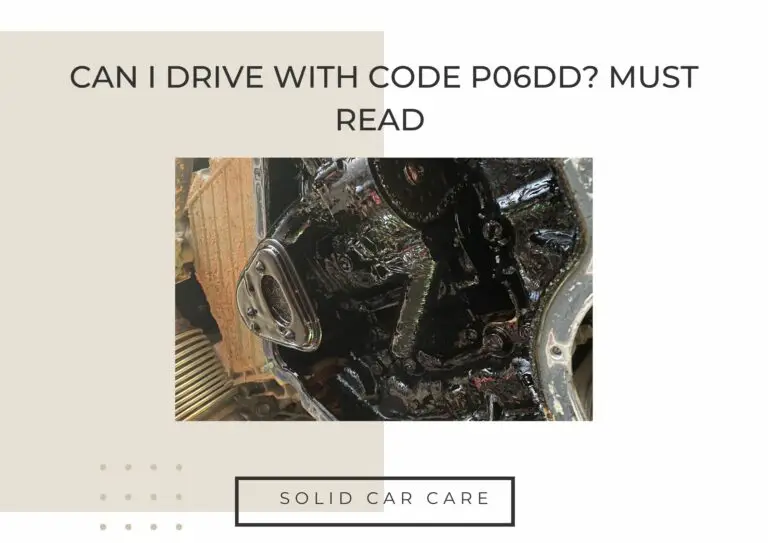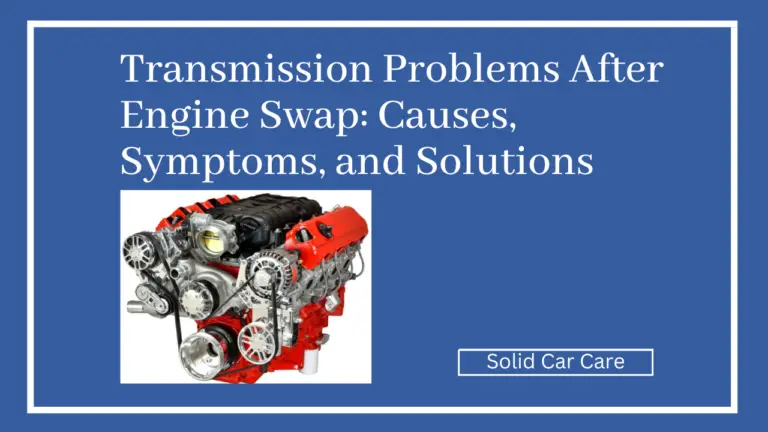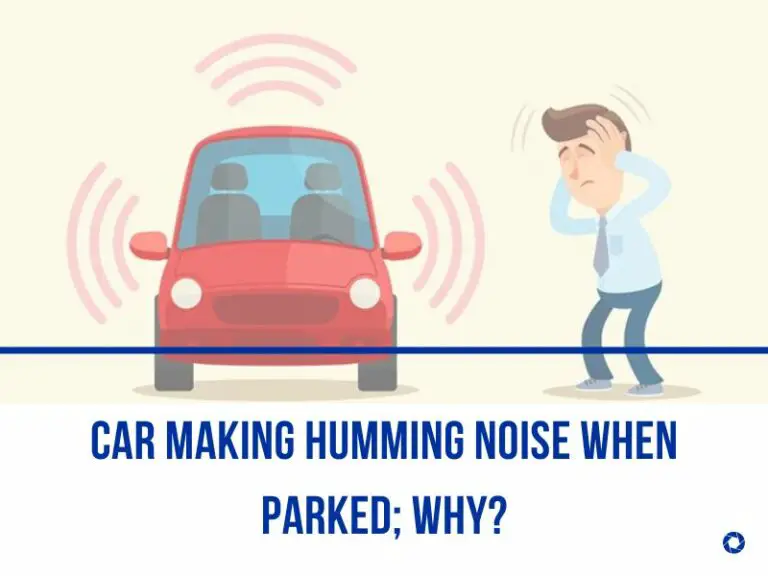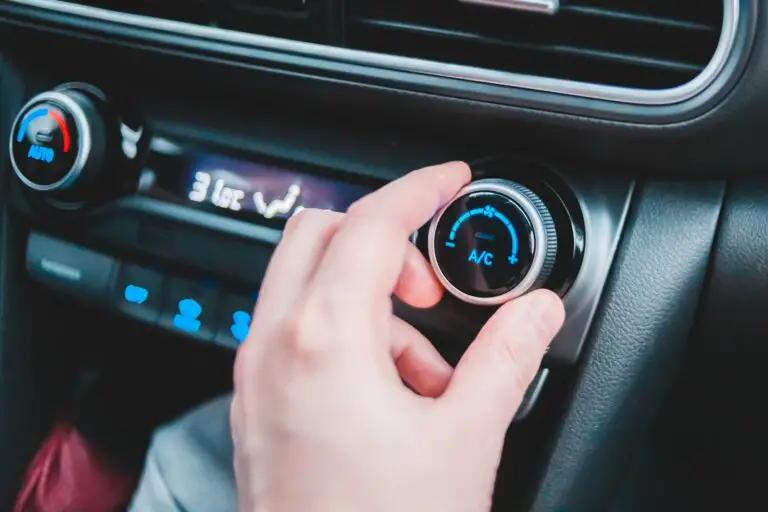Symptoms of Loose Strut Nut; All Explained
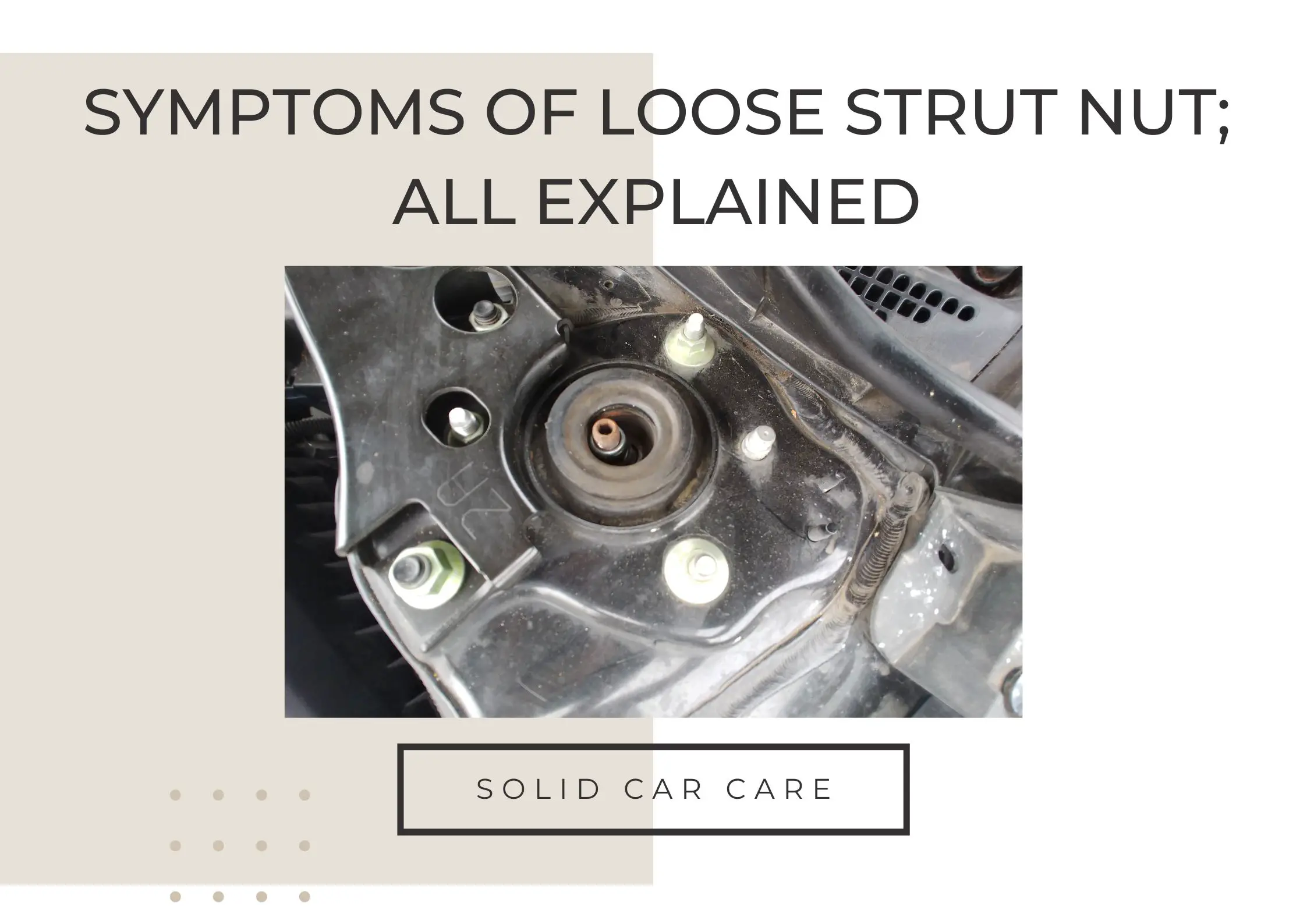
A properly functioning suspension system is crucial for a smooth and safe ride. One of the key components in this system is the strut nut. Though small, a loose strut nut can cause significant issues with your vehicle’s performance and handling.
In this article, we will explore the symptoms of a loose strut nut, its potential causes, methods for diagnosis, and steps to fix the problem. By understanding the signs and taking appropriate action, you can ensure the optimal operation of your vehicle’s suspension system.
Table of Contents
What is a Strut Nut?
A strut nut is a fastening component that secures the strut assembly to the vehicle’s chassis. It is typically located at the top of the strut, connecting it to the vehicle’s body.
The primary function of the strut nut is to provide stability and support to the suspension system while allowing for vertical movement of the strut during vehicle operation.
Strut nuts are usually made of durable materials such as steel or aluminium alloy to withstand the forces exerted on them.
What are the symptoms of a Loose Strut Nut?
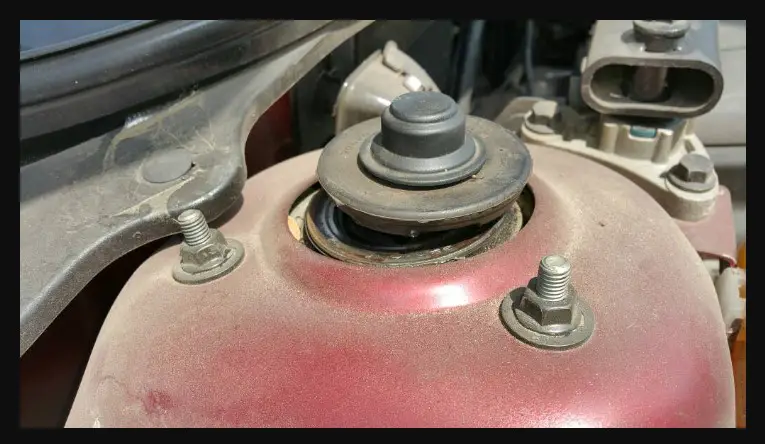
Excessive Noise and Clunking Sounds
One of the first indicators of a loose strut nut is the presence of unusual noises while driving. You may hear clunking sounds coming from the suspension area, particularly when going over bumps or uneven surfaces.
These noises occur due to the excessive movement of the strut caused by the loose nut, resulting in a loss of stability and an audible impact.
Uneven Tire Wear
A loose strut nut can lead to uneven tire wear patterns. When the suspension system is not properly supported, it can cause the tires to make uneven contact with the road surface.
This can result in irregular wear on the tire treads, potentially affecting the vehicle’s handling, traction, and overall tire lifespan.
Poor Handling and Stability
A loose strut nut compromises the stability and handling of the vehicle. You may notice a decreased steering responsiveness, increased body roll during cornering, or a general feeling of instability while driving.
These symptoms can impact your ability to control the vehicle safely and may require immediate attention.
Vibration and Shaking
A loose strut nut can contribute to vibrations, and shaking sensations felt through the steering wheel, especially at higher speeds. The inadequate support provided by the loose nut allows excessive strut movement, transmitting vibrations to the steering components and, ultimately, to the driver’s hands.
How To Turn Off Traction Control; A Step-by-Step Guide
Solid Car Care
What causes a Loose Strut Nut?
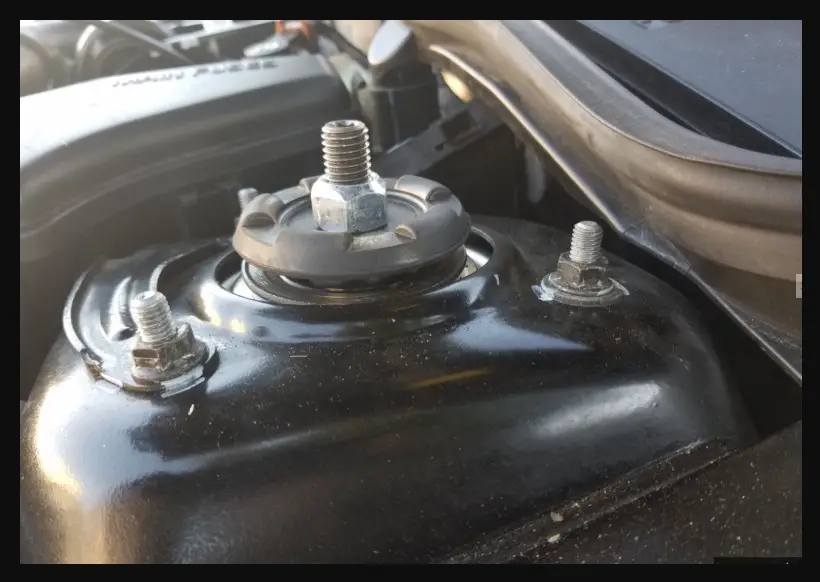
Improper Installation or Torque
A common cause of a loose strut nut is improper installation or insufficient torque during assembly.
If the nut is not tightened to the manufacturer’s specified torque, it can gradually loosen over time due to the vibrations and forces experienced during normal vehicle operation.
Wear and Tear over Time
The constant movement and exposure to various road conditions can cause wear and tear on the strut nut and its surrounding components.
Over time, the nut may become loose due to the repeated stress placed upon it, necessitating attention and potential replacement.
Road Conditions and Driving Habits
Frequent exposure to rough roads, potholes, or aggressive driving habits can accelerate the wear and loosening of the strut nut.
These factors increase the forces acting on the suspension system, potentially causing the nut to become loose faster than normal driving conditions.
How to Diagnose a Loose Strut Nut?
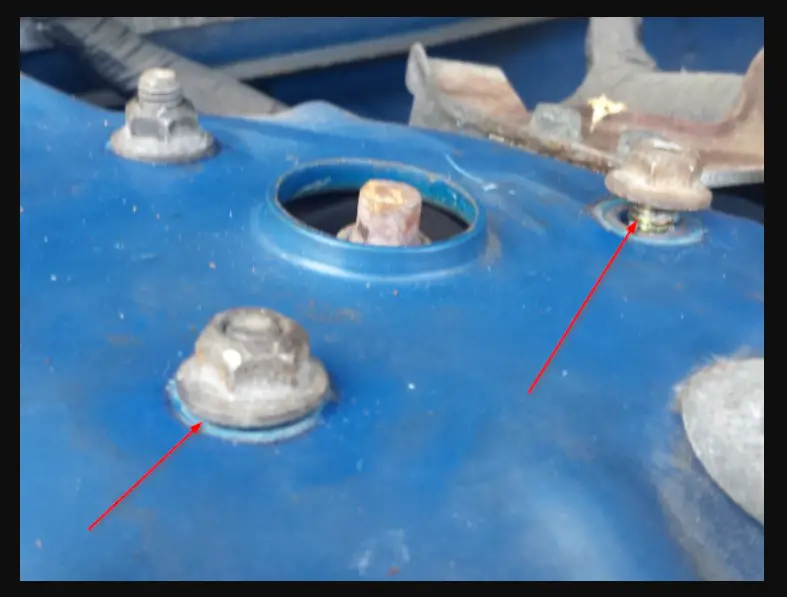
Step 01- Visual Inspection
Perform a visual inspection of the strut assembly, paying close attention to the strut nut. Look for any looseness or damage, such as rust, corrosion, or worn threads. The strut nut likely requires attention if the nut appears loose or has any signs of damage.
Step 02- Listening for Unusual Noises
While driving over bumps or uneven surfaces, listen for any clunking, knocking, or rattling noises from the suspension area. These sounds can indicate a loose strut nut. If you notice any unusual noises, it’s important to have the vehicle inspected by a qualified technician.
Step 03- Test Drive and Performance Evaluation
Take the vehicle for a test drive and observe its handling and stability. Note any changes in steering responsiveness, body roll, or vibrations. If you experience any of the symptoms mentioned earlier, it’s advisable to seek professional assistance for further evaluation and diagnosis.
Battery and Brake Light On; What Should You Do Now?
Solid Car Care
How to Fix a Loose Strut Nut?
Step 01- Torquing the Nut to Specified Values
To fix a loose strut nut, it’s essential to torque it to the manufacturer’s specified values. Use a torque wrench to tighten the nut according to the recommended torque settings. This ensures the nut is properly secured, providing the stability and support for the strut.
Step 02- Replacing Damaged or Worn Components
If the strut nut or its surrounding components are damaged or worn beyond repair, it may be necessary to replace them.
Consult a professional mechanic or technician who can accurately diagnose the problem and replace any faulty parts with quality replacements.
Step 03- Professional Alignment and Suspension Inspection
After fixing a loose strut nut, it’s recommended to have a professional alignment and suspension inspection performed. This ensures that the suspension system is properly aligned and functioning optimally, minimizing the risk of future issues and preserving the overall performance and safety of the vehicle.
Preventive Maintenance for Strut Nuts
Include routine inspections of the strut nuts as part of your regular vehicle maintenance schedule. Look for signs of looseness, damage, or wear during these inspections. Address any issues promptly to prevent further complications.
When you rotate your vehicle’s tires, take the opportunity to check the torque of the strut nuts. Ensure they are tightened to the manufacturer’s specified values. This simple step can help maintain the stability and integrity of the suspension system.
New struts making noise over bumps; why?
When new struts make noise over bumps, it can be attributed to a few potential causes. One possible reason is that the struts have not yet fully settled or broken in. As the suspension components adjust and adapt to the vehicle’s weight and driving conditions, some noise may be temporarily experienced.
Additionally, if the new struts are not properly installed or aligned, they can produce noise when encountering bumps or uneven surfaces. It’s also important to consider the struts’ quality, as low-quality or defective components can contribute to noise issues.
If the noise persists or worsens, it’s advisable to have the vehicle inspected by a qualified technician for further assessment and potential adjustments.
Can driving with a loose strut be dangerous?
Yes, driving with a loose strut can be dangerous. A loose strut compromises the stability and handling of the vehicle, affecting its ability to respond predictably to steering inputs and maintain proper tire contact with the road surface.
This can lead to reduced control, especially during maneuvers such as cornering or emergency braking. The lack of stability can also increase body roll, making the vehicle more prone to tipping or losing control.
Also, a loose strut can negatively impact the alignment and suspension geometry, compromising the vehicle’s overall performance and safety. It’s crucial to address a loose strut promptly to ensure a safe and controlled driving experience.
Conclusion
A loose strut nut can significantly affect your vehicle’s suspension system and overall driving experience. You can ensure a smooth and safe ride by recognizing the symptoms and taking appropriate action, such as diagnosing the problem, fixing the loose nut, and implementing preventive maintenance measures. Regular inspections, timely repairs, and adherence to the manufacturer’s torque specifications will help keep your strut nuts securely fastened, providing optimal support and stability to your vehicle’s suspension system.
Some related FAQs
Can a loose strut cause damage to other suspension components?
Yes, a loose strut can cause additional stress on other suspension components, such as the control arms or sway bar links. Over time, this added strain can lead to premature wear and potential damage to these components.
Can a loose strut affect tire wear?
Yes, a loose strut can cause uneven tire wear patterns. When the suspension system is not adequately supported, it can lead to irregular contact between the tires and the road surface, resulting in uneven tread wear.
Can I tighten a loose strut nut myself?
Tightening a loose strut nut yourself is not recommended unless you have the necessary knowledge and tools. It’s best to consult a qualified technician to properly diagnose and address the issue, ensuring that the strut nut is tightened to the manufacturer’s specifications.
How long does it take to fix a loose strut?
The time required to fix a loose strut depends on the specific circumstances and the extent of the problem. It can range from a relatively quick tightening of the nut to a more involved process that may require the replacement of damaged components. Consulting with a professional will provide a more accurate estimate.

